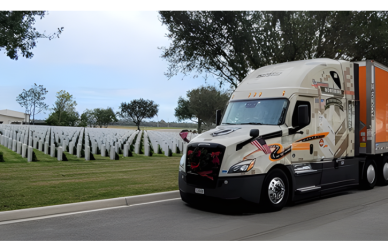Transitioning to alternative fuels has become increasingly critical as the trucking industry faces mounting pressure to lower its carbon footprint. As noted by the OOIDA Foundation, “The movement toward a carbon-free footprint is still many years away, especially in the trucking industry, but as vehicles wear out and are replaced, there may be few options available except those that produce zero emission.” Consequently, various sources of renewable energy are being investigated by truckers aiming to lessen their environmental impact. Key alternative fuels such as compressed natural gas (CNG), liquefied natural gas (LNG), renewable natural gas (RNG), and propane are central to this exploration.
Insights into Natural Gas and Liquefied Natural Gas
To harness the potential of natural gas in long-haul trucking, it must undergo conversion to liquid natural gas. The tanks used for LNG are remarkably robust, supporting a range of about 360 miles per fill. With their reinforced steel structure and double-walled design, these tanks are engineered to withstand the rigors of travel. Notably, unlike conventional fuels like gasoline or diesel, any accidental puncture will lead to evaporation rather than pooling, thus enhancing safety. However, the initial investment for LNG-powered trucks is substantial, often exceeding diesel vehicle prices by approximately $65,000.
Exploring Propane as an Engine Fuel
Recognized by the Energy Policy Act of 1992, propane stands as the third-most-common engine fuel across the globe. In the United States, an impressive 90% of the propane utilized is sourced domestically. As a clean-burning alternative, propane contributes significantly to lower greenhouse gas emissions compared to traditional gasoline and diesel. Common applications include forklifts and commercial lawn equipment—demonstrating its versatility and lower carbon footprint. However, it’s important to note that propane vehicles typically experience about a 14% reduction in driving range relative to gasoline counterparts, primarily due to the energy content differences—propane offers only 73% of the energy found in gasoline. Additional considerations include fuel costs, vehicle weight, safety risks associated with propane leaks, and insufficient fueling infrastructure, often necessitating fleet installations of dedicated propane stations.
The Role of Compressed Natural Gas (CNG)
Compressed natural gas presents an environmentally friendly option that is plentiful and sourced primarily within the United States. One of its key advantages is its lighter-than-air composition, allowing natural gas to disperses harmlessly when a leak occurs. Truckers are increasingly turning to CNG due to its lower greenhouse gas emissions during combustion, affordability—approximately 50% less than conventional fuels—and the potential to reduce carbon monoxide emissions by as much as 97%. However, CNG’s range limitations and the necessity for specialized fueling infrastructure continue to be challenges. Retail stations often deploy fast-fill systems, while many fleets leverage overnight time-fill methods for convenience. The expenses associated with setting up a natural gas fueling site can be prohibitive, ranging from $1 million to $4 million. Furthermore, while a new CNG vehicle may cost around $30,000 more than its diesel counterpart, users benefit from significantly lower average fuel prices, with natural gas currently priced around $2.08 per gallon. CNG storage also poses hazards, requiring careful handling due to high-pressure conditions (approximately 3,600 psi), as even minor leaks can lead to considerable risks.
For further details, research, member surveys, and updates on the freight market, visit the OOIDA Foundation website.
Source: Land Line











